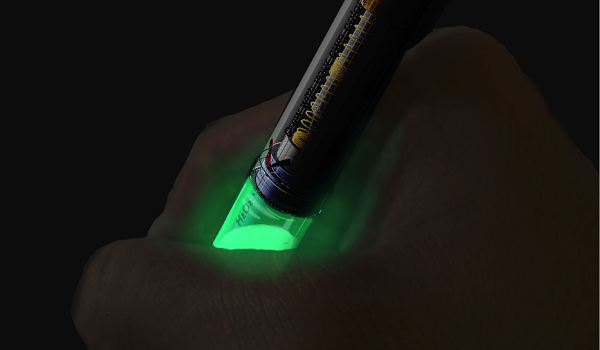Team:KIT-Kyoto/Humanpractice
From 2013.igem.org
| Line 110: | Line 110: | ||
<img src="https://static.igem.org/mediawiki/2013/archive/e/e2/20130927132509%21Fig._5_Tokyo_Towers_and_Gold_Medal.jpg" > | <img src="https://static.igem.org/mediawiki/2013/archive/e/e2/20130927132509%21Fig._5_Tokyo_Towers_and_Gold_Medal.jpg" > | ||
<img src="https://static.igem.org/mediawiki/2013/0/06/Fig._6_Olympic-ene.jpg" > | <img src="https://static.igem.org/mediawiki/2013/0/06/Fig._6_Olympic-ene.jpg" > | ||
| + | <img src="https://static.igem.org/mediawiki/2013/b/bf/Fig._8_Olympic_Flame_and_Tokyo_Tower.jpg" > | ||
| + | <img src="" > | ||
| + | <img src="" > | ||
| + | <img src="" > | ||
| + | <img src="" > | ||
| + | <img src="" > | ||
| + | <img src="" > | ||
| + | <img src="" > | ||
| + | <img src="" > | ||
| + | <img src="" > | ||
<img src="" > | <img src="" > | ||
Revision as of 13:28, 27 September 2013



Overview
People all over the world today tend to lose interest in science, so we think that this tendency disturb progress of synthetic biology. For example, ordinary people seem to think recombinant DNA technologies, which are the basis of synthetic biology as unpleasant. In this way, they do not fully understand what recombinant DNA technologies are, and they still hesitate to buy and eat GM foods. These problems seem to be faced in the world when recombinant DNA technologies will be developed and used in many fields. We want a lot of people to know not only in Japan but also in the world, so we try these things as Human Practice.
At the campus visit (2013/08/9,10)
We prepared a booth to introduce iGEM in KIT Campus visit and explained our activity of iGEM to a visitor.
To make the presentation simple, we tried to avoid using technical terms.
Besides, we displayed model organisms used in genetics, such as fruit-fly Drosophila melamogaster, and colon bacterium Eschericia coli. Students could see Drosophila mutants. And we displayed "E.Coli Pen" and some pictures drawn with it.
We aimed to make their understanding clear, and make them feel familiar to genetic engineering.
There were about 100 students and their parents who came to our booth. They told us that their ideas and conceptions about biology were broadened by looking closely at the model organisms.




Survey
“What project do we do in ? iGEM 2013?” It is the first difficulty for us to decide it. In order to get a clue, we have researched about public awareness on genetic technology and gene modified foods, as a human practice project.

Figure 1 indicates that the respondents can accept either genetically modified foods or non-genetically modified foods. “Non- genetically modified” was 59%, “genetically modified” was 3%, and “do not care” was 38%. These results suggest that more than half of Japanese consumers tend to choose “non- genetically modified” foods.

Figure 2 shows that respondents who answered “non- genetically modified” in Question2 chose the same answer regardless of the price, meaning that they would buy “non- genetically modified” foods if those were more expensive than “genetically modified” foods. More than half of respondents (51%) answered "yes", and 47% said "yes and no", and 2% said "no". This result suggest that approximately half of consumers would not to buy genetically modified foods regardless of the price. We also concluded that approximately 30% of Japanese consumers absolutely reject genetically modified foods at present.

Figure 3 shows the impression of consumers on the words “genetically modifying”. As the result, 14% of respondents answered "positive", 48% "it does not matter", and 38% "negative", suggesting that more than one-third Japanese have a negative impression on the words “genetically modifying”.

We asked the reason of “negative impression” from six choices: "1. many unknown parts are remained.”, “2. availability is not clear”, “3. effect on health is not clear.”, “4. its dangerousness has been reported by mass media”, “5. no reason”, “6. others.” Figure 4 demonstrates that reasons 1 and 3 account for the majority (about 80 %). It was considered that most Japanese distrust genetic engineering because of lack of correct information.
Through the survey, we are sure that it must be quite effective to announce the correct information about the genetic engineering for Japanese consumers in order to improve their negative imporession on it.
Introduction the class of Bioart
2013/09/17~2013/09/19
In our college KIT, bioart was firstly introduced as a lecture with practical course called "Fusion of Science and Art" using our project 2010, E. coli pen in this year. Undergraduate students who major not only biology but also various fields of science can take the lecture.
Students learned the mechanism that the ink of E. coli pen emits fluorescence and drew paintings on agar plates using E. coli inks. And they gave a presentation on their concept of bioart.
Furthermore, the bioart described in E.coli Pen will be carried by the textbook of the high school student.
We realize synthetic biology spreads out steadily.
This lecture helps various students to know synthetic biology and to feel familiar with genetic engineering. We expect that it will develop into global lecture and disseminate synthetic biology to the world from Japan like iGEM which was a practical course of bioengineering in MIT.
Furthermore, the bioart described in E.coli Pen is carried by the textbook of the high school student.
The KIT Student’s Works of Bio-Art Class in 2013



 "
"